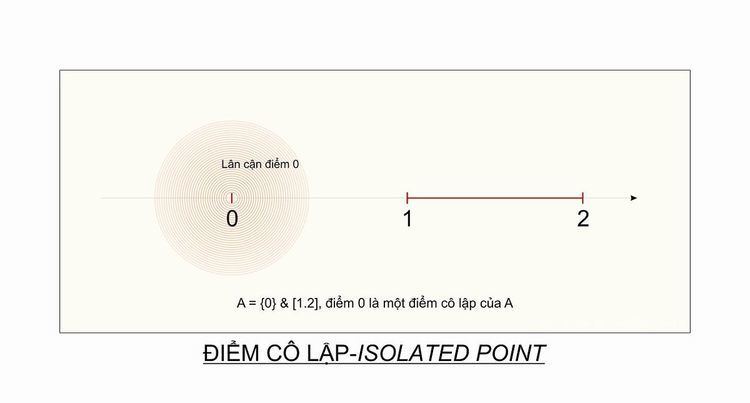 | ||
In mathematics, a point x is called an isolated point of a subset S (in a topological space X) if x is an element of S but there exists a neighborhood of x which does not contain any other points of S. This is equivalent to saying that the singleton {x} is an open set in the topological space S (considered as a subspace of X). If the space X is a Euclidean space (or any other metric space), then x is an isolated point of S if there exists an open ball around x which contains no other points of S. (Introducing the notion of sequences and limits, one can say equivalently that a point x is an isolated point of S if and only if it is not a limit point of S.)
Contents
A set that is made up only of isolated points is called a discrete set. Any discrete subset S of Euclidean space must be countable, since the isolation of each of its points together with the fact the rationals are dense in the reals means that the points of S may be mapped into a set of points with rational coordinates, of which there are only countably many. However, not every countable set is discrete, of which the rational numbers under the usual Euclidean metric are the canonical example. See also discrete space.
A set with no isolated point is said to be dense-in-itself (every neighborhood of a point contains other points of the set). A closed set with no isolated point is called a perfect set (it has all its limit points and none of them are isolated from it).
The number of isolated points is a topological invariant, i.e. if two topological spaces
Standard Examples
Topological spaces in the following examples are considered as subspaces of the real line with the standard topology.
A Counter-intuitive Example
Let us consider the set
Now,
Another set
